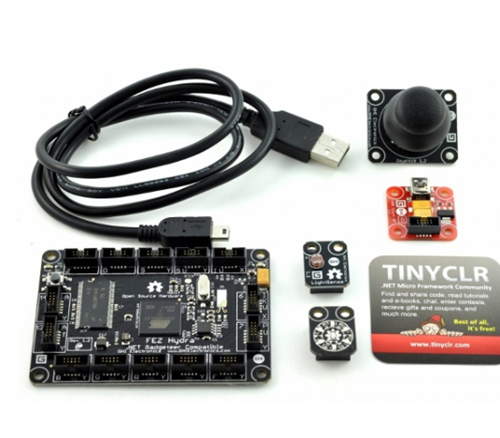Getting Started with Gadgeteer
/WE had the folks from Microsoft Gadgeteer here to see us yesterday. They brought with them all kinds of cool interfaces that I’m looking forward to playing with, after I’ve finished marking. If you’ve not come across Gadgeteer before it is a .NET Micro Framework based platform for creating, well, er, gadgets.
If you’ve ever wanted to create a data logging, remote controlled, catflap. Or a GPS-enabled TV remote, or a motion detecting chicken counting camera, etc etc, then Gadgeteer gives you the modules to plug together to make the hardware and Visual Studio and C# to write the software, including in device debugging of your code.
There are a huge number of modules available now including camera, LCD panel, gyro, compass, lights, switches, multi-io boards, barometer, soil moisture sensors, heart rate sensors, Bluetooth, WiFi, GPS, GPRS, infra-red, ethernet, USB Host and USB client. Plus you can bring out the individual signals from the processor and use them directly.
You can get started with the Fez Hydra Basic Kit, which you can see above. This costs around the same as a video game and a half. The sensors range from a fiver to quite expensive (for things like the VGA adapter, if you need it). If you want to get started in embedded development, or have an idea for a device and want to make it come to life, the Gadgeteer is a great place to start, particularly if you already have C# skills.
We have been using the Gadgeteer’s older brother, the .NET Micro Framework, for the last couple of years and it has been a very successful means of introducing students to the joys of making hardware do stuff. If you want to have a go with this kind of thing you should take a look.
If you are a student at Hull and you have have a really good idea for a device, and you want some hardware to play with over summer, then come and see me and I’ll see if I can find a kit to loan you.






